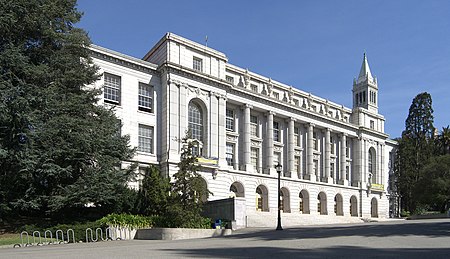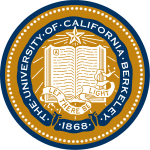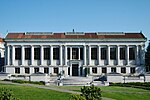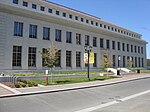Wheeler Hall

Wheeler Hall is a building on the campus of the University of California, Berkeley in Berkeley, California in the Classical Revival style. Home to the English department, it was named for the philologist and university president Benjamin Ide Wheeler. The building was opened in 1917. It houses the largest lecture hall on the Berkeley campus, Wheeler Auditorium. On February 29, 1940, UC Berkeley professor Ernest O. Lawrence received the Nobel Prize in Physics in Wheeler Auditorium from Carl Wallerstedt, Consul General from Sweden, due to the danger of crossing the Atlantic during World War II. The building was the site of many of the Free Speech Movement protests in the 1960s and is a focal point of the Berkeley campus. In the 2010s, it has been the place for many university protests and several building takeovers.
Excerpt from the Wikipedia article Wheeler Hall (License: CC BY-SA 3.0, Authors, Images).Wheeler Hall
Campanile Way, Berkeley
Geographical coordinates (GPS) Address External links Nearby Places Show on map
Geographical coordinates (GPS)
| Latitude | Longitude |
|---|---|
| N 37.871027777778 ° | E -122.25905555556 ° |
Address
Wheeler Hall
Campanile Way
94704 Berkeley
California, United States
Open on Google Maps







